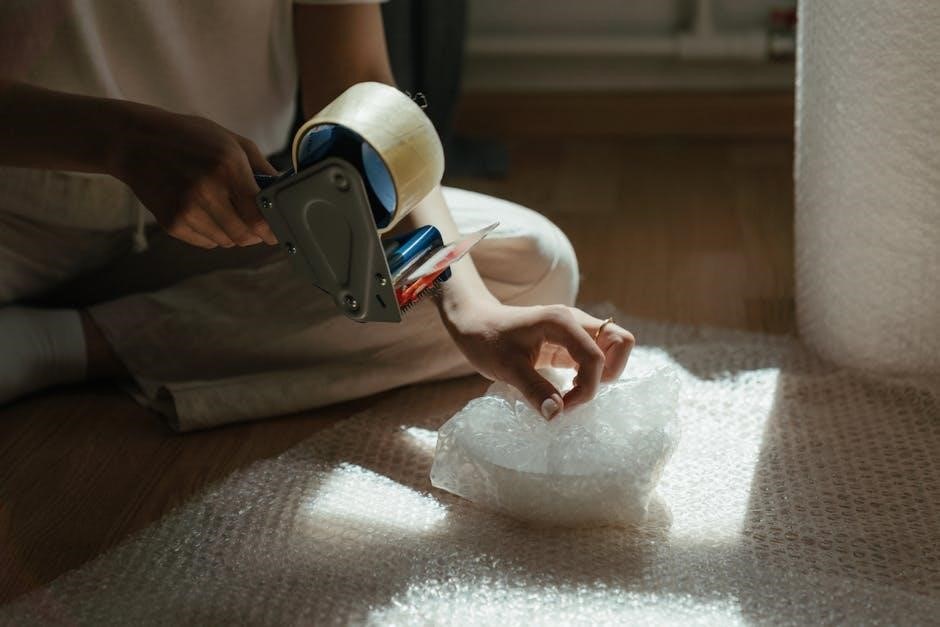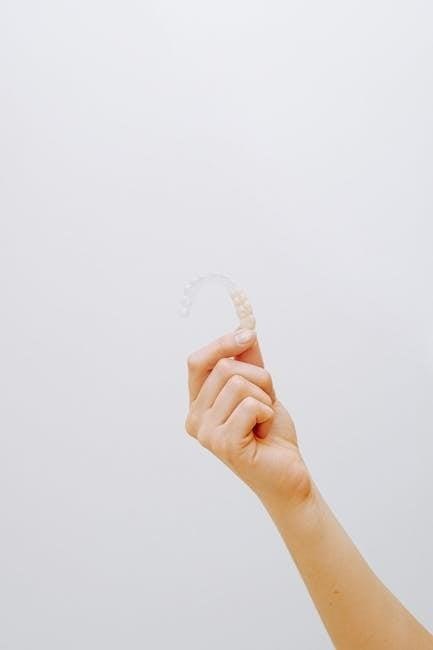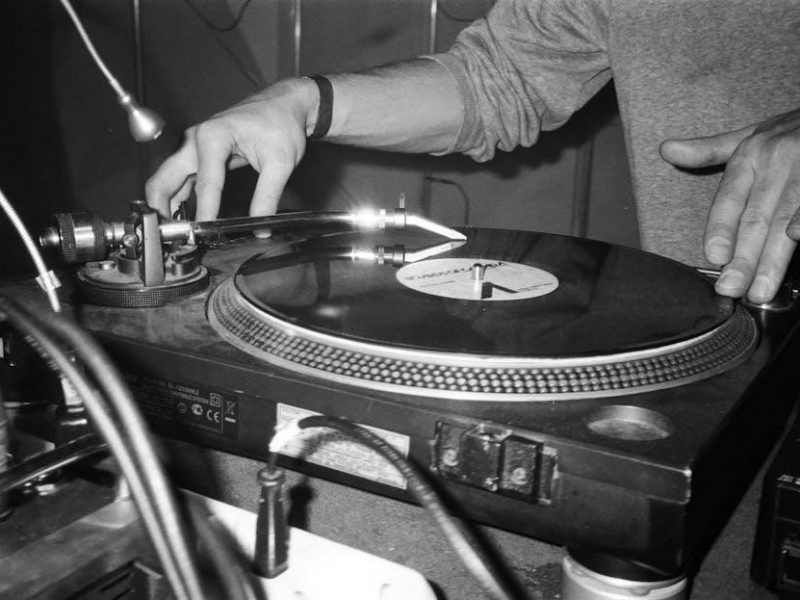Proper care is essential for the effectiveness and longevity of Invisalign aligners. This guide outlines daily routines, cleaning tips, and storage methods to ensure optimal treatment outcomes and maintain your new smile.
1.1 Importance of Proper Invisalign Care
Proper care ensures the effectiveness of Invisalign treatment and prevents damage to aligners. Neglecting care can lead to bacteria buildup, stains, or misalignment issues. Regular cleaning and storage maintain hygiene, while avoiding harmful products prevents damage. Proper care also ensures a comfortable fit and optimal tooth movement. By following guidelines, patients achieve better results and protect their investment in orthodontic treatment. Good oral hygiene habits further support treatment success and long-term smile maintenance.
1.2 Overview of Invisalign Treatment
Invisalign treatment involves clear, removable aligners designed to straighten teeth without traditional braces. A series of custom-made trays gradually shift teeth into alignment. Each set of aligners is worn for 20-22 hours daily, replaced every 1-2 weeks. Treatment duration varies, typically lasting 12-18 months. Digital impressions and 3D technology create precise aligners for personalized results. Invisalign is ideal for mild to moderate orthodontic issues, offering a discreet and comfortable alternative to metal braces. Regular orthodontist visits monitor progress, ensuring effective tooth movement and achieving desired outcomes.

Daily Care and Maintenance
Clean aligners daily with water and a soft toothbrush. Rinse thoroughly after meals and before bed to prevent bacteria buildup. Consistency ensures hygiene and effectiveness.
2.1 Morning Cleaning Routine
Start your day by removing your Invisalign aligners and rinsing them under warm water to eliminate any plaque or bacteria accumulated overnight. Gently brush your aligners with a soft toothbrush and a small amount of mild toothpaste to remove stains or residue. Avoid using abrasive toothpaste or harsh chemicals, as they may damage the aligners. Rinse thoroughly to ensure no toothpaste remains. After cleaning, pat the aligners dry with a soft cloth to prevent water spots. Store them in your Invisalign case until you’re ready to put them back on. This routine helps maintain hygiene and keeps your aligners clear and odor-free. Consistency is key to ensuring optimal results and comfort during your treatment.
2.2 After-Meal Cleaning Instructions
After eating, remove your Invisalign aligners and rinse them with warm water to eliminate food particles. If you can’t brush your teeth immediately, rinse your mouth and aligners thoroughly. Use a soft toothbrush to gently scrub your aligners with a small amount of mild toothpaste, avoiding abrasive products that can scratch them. Rinse again to remove any residue. For tougher stains, consider using an Invisalign-approved cleaning product. Store your aligners in their case until you’re ready to reinsert them. Proper cleaning after meals prevents bacteria buildup and keeps your aligners hygienic and invisible. Consistency ensures a smooth treatment process and optimal results.
2.3 Nighttime Care Tips
Before bed, ensure your Invisalign aligners are clean and dry to prevent bacteria growth. Brush and floss your teeth thoroughly to avoid trapping food particles. Clean your aligners with a soft toothbrush and mild soap, then rinse with lukewarm water. Soak them overnight in a cleaning solution or water to maintain hygiene. When reinserting in the morning, rinse your mouth and aligners again. Avoid wearing aligners with tight fit or discomfort at night. Store them in their case if not wearing them for an extended period. Proper nighttime care ensures your aligners remain clean and effective for your treatment. Consistency is key for optimal results.

Cleaning Your Invisalign Aligners
Clean your Invisalign aligners with a soft toothbrush and mild soap. Avoid harsh chemicals and soak them regularly to maintain clarity and hygiene.
3.1 Recommended Cleaning Products
For effective cleaning, use Invisalign®-approved cleaning crystals or a mild antibacterial soap. Gently scrub aligners with a soft toothbrush to remove plaque. Avoid harsh chemicals, bleach, or abrasive cleaners, as they can damage the material. White vinegar solutions (50/50 with water) can help eliminate germs but avoid prolonged soaking. Regularly rinse aligners under lukewarm water to maintain clarity and prevent bacteria buildup. Always dry aligners before storing to prevent moisture-related issues. Using the right products ensures your aligners remain clean, clear, and odor-free throughout treatment.
3.2 DIY Cleaning Solutions
For a cost-effective approach, create DIY cleaning solutions using household items. Mix equal parts hydrogen peroxide and water or use a solution of 1 teaspoon baking soda in 8 ounces of water. Soak aligners for 15–30 minutes to remove stains and bacteria. Avoid using toothpaste, as it can scratch the aligners. For a natural option, dilute white vinegar with water (1:2 ratio) and soak for 10 minutes. Always rinse thoroughly with lukewarm water after soaking. These solutions are gentle yet effective for maintaining clean and clear aligners during treatment.
3.3 Soaking Aligners for Deep Cleaning
Soaking your Invisalign aligners is an effective way to maintain their clarity and hygiene. Use a mixture of hydrogen peroxide and water or baking soda and water for this process. Soak the aligners for 15–30 minutes, ideally in the morning or before bed, to remove plaque and stains. Always rinse with lukewarm water after soaking to ensure no residue remains. Avoid using hot water, as it may warp the aligners. Regular soaking helps prevent discoloration and keeps your aligners fresh. For best results, incorporate this deep-cleaning routine at least once a week.

Storing Your Invisalign Aligners
Always store your Invisalign aligners in their official case to protect them from damage and loss. Keep them away from pets and children to prevent accidental damage or misplacement. Store the case in a cool, dry place to maintain the aligners’ shape and clarity. Avoid leaving them in direct sunlight or extreme temperatures, as this can warp the plastic. Proper storage ensures your aligners remain clean, secure, and ready for use when needed.
4.1 Using the Invisalign Case
The Invisalign case is specifically designed to protect your aligners when not in use. Always store your aligners in the case to prevent damage, loss, or exposure to harmful substances. The case is made of durable, BPA-free material and features a secure closure to keep your aligners safe. Use the case during travel or when aligners are not being worn, such as during meals or oral hygiene routines. Storing your aligners properly in the case ensures they remain clean, dry, and free from distortion caused by heat or pressure. This simple habit is essential for maintaining the integrity and effectiveness of your Invisalign treatment.
4.2 Tips for Safe Storage
When storing your Invisalign aligners, avoid exposure to heat sources like direct sunlight, hot water, or appliances, as this can warp or damage the plastic.
Always use the provided case or a protective container to prevent bending or cracking.
Label the case with your name for easy identification and to avoid mix-ups.
Keep the case in a cool, dry place, such as a bathroom counter or drawer, away from children and pets.
Clean the case regularly to prevent bacteria buildup.
Never store aligners in tissues or napkins, as they may be accidentally thrown away.
By following these tips, you ensure your aligners remain in excellent condition throughout your treatment.

Wearing Invisalign Aligners
Ensure your Invisalign aligners fit comfortably and avoid eating while wearing them. Regularly inspect for damage or discomfort to maintain proper alignment and treatment progress.
5.1 How Long to Wear Aligners Daily
Invisalign aligners should be worn for 20-22 hours daily for optimal results. This includes overnight wear and throughout the day, except during meals or oral hygiene routines. Consistency is key to ensuring proper tooth movement and alignment progress. Failure to meet the recommended wear time may delay treatment or reduce effectiveness. Patients should prioritize keeping aligners in place, even during sleep, to maintain consistent pressure on the teeth. Forgetting to wear them for extended periods can lead to prolonged treatment duration. Regularly tracking wear time helps patients stay compliant with their orthodontist’s instructions.
5.2 When to Remove Aligners
Invisalign aligners should be removed during meals, snacks, and when drinking anything other than water. This prevents food particles and stains from getting trapped. Remove them for oral hygiene routines like brushing and flossing to ensure proper cleaning. Aligners should also be taken out during sports or activities that could damage them. Additionally, remove them for special occasions or photos if desired. However, avoid leaving aligners out for extended periods, as this can delay treatment progress. Always store them in the provided case to prevent loss or damage. Proper removal and storage are essential for maintaining effectiveness and longevity.

Long-Term Maintenance
Regular orthodontic check-ups and consistent aligner wear are crucial for long-term Invisalign maintenance. Monitoring progress ensures proper teeth alignment and timely adjustments, leading to a successful treatment outcome.
6.1 Regular Appointments with Your Orthodontist
Regular appointments with your orthodontist are essential for tracking progress and ensuring your Invisalign treatment stays on course. During these visits, your orthodontist will monitor teeth movement, assess aligner fit, and make necessary adjustments. They may also provide new sets of aligners or address any issues, such as tight fits or misalignments. Consistency in attending these appointments ensures that your treatment progresses smoothly and avoids potential complications. Skipping appointments can delay results, so maintaining a schedule is crucial for achieving your desired smile. Communication with your orthodontist is key to addressing concerns and optimizing your treatment outcome;
6.2 Monitoring Treatment Progress
Monitoring your Invisalign treatment progress is crucial to ensure your smile transformation stays on track. Regularly assess how your teeth are aligning and note any visible improvements. Use the Invisalign app to track your progress and stay informed about your treatment timeline. Attend scheduled appointments to allow your orthodontist to evaluate alignment and address any concerns. While self-monitoring is helpful, professional guidance ensures accuracy and adjustments as needed. Stay proactive in observing changes and communicate openly with your orthodontist for optimal results. Consistent monitoring helps achieve the desired smile efficiently and effectively.

Common Mistakes to Avoid
Avoid common mistakes like not wearing aligners for the recommended 22 hours daily, using abrasive cleaners, and removing aligners improperly, which can delay treatment progress.
7.1 Improper Cleaning Methods
Improper cleaning methods can damage your Invisalign aligners and compromise treatment effectiveness. Avoid using harsh chemicals, abrasive toothpaste, or hot water, as these can scratch or discolor the aligners. Never soak them in bleach or alcohol, as this can weaken the plastic. Additionally, avoid using colored soaps or scented products, as they may leave residue. Instead, opt for gentle cleaning solutions like Invisalign’s recommended cleaning crystals or a mix of water and mild dish soap. Always rinse thoroughly to remove any cleaning agent residue. Improper cleaning can lead to cloudy aligners, bad odors, or even bacteria buildup.
7.2 Forgetting to Remove Aligners
Forgetting to remove your Invisalign aligners can lead to discomfort and hinder treatment progress. Eating or drinking with aligners in place can trap food particles and liquids, increasing the risk of bacteria buildup and odor. Additionally, failing to remove them during activities like sports or sleeping can cause unnecessary wear or damage. To avoid this, set reminders or develop a routine to ensure you take them out before meals, brushing, or engaging in activities. Consistently removing aligners as directed helps maintain hygiene and ensures your treatment stays on track for the best results.

Troubleshooting Issues
Troubleshooting common issues like stains, odor, or misaligned trays is crucial for maintaining your Invisalign aligners. Regular cleaning and proper storage can prevent most problems. Addressing issues promptly ensures optimal treatment outcomes and keeps your aligners in good condition. Always consult your orthodontist if problems persist. Early intervention helps avoid delays in your smile transformation journey.
8.1 Dealing with Stains on Aligners
Stains on Invisalign aligners can occur due to poor cleaning habits or exposure to certain foods and drinks. To address this, rinse your aligners with warm water and use a gentle cleaning product. Avoid using harsh chemicals or toothpaste, as they may damage the plastic. For stubborn stains, soak the aligners in a solution of equal parts water and white vinegar for 15–30 minutes. Gently scrub with a soft toothbrush before rinsing thoroughly. Regular cleaning and avoiding staining substances like coffee or red wine can help prevent discoloration. Consult your orthodontist if stains persist despite proper care.
8.2 Addressing Odor or Discoloration
Odor or discoloration on Invisalign aligners can result from inadequate cleaning or bacterial buildup. To eliminate odor, rinse your aligners with warm water and use a mild soap or Invisalign-specific cleaner. Avoid using colored soaps or mouthwashes, as they may cause discoloration. Soaking aligners in a solution of water and hydrogen peroxide can help reduce odor and lighten stains. Regularly cleaning and drying your aligners before storage can prevent these issues. If the odor or discoloration persists, consult your orthodontist for professional cleaning or replacement options.

Post-Treatment Care
After completing Invisalign treatment, focus on maintaining your new smile. Wear retainers as directed, clean them regularly, and avoid foods that could damage or discolor them.
9.1 Caring for Retainers
Proper care for retainers is essential to maintain their effectiveness and longevity. Clean your retainers daily using a soft toothbrush and mild soap. Avoid harsh chemicals or abrasive materials, as they can damage the retainer. Soak them in a cleaning solution recommended by your orthodontist to remove plaque and bacteria. Store retainers in their protective case when not in use to prevent loss or damage. Regularly inspect for wear or cracks and schedule appointments if adjustments are needed. Follow your orthodontist’s specific instructions for the type of retainer you have.
- Avoid exposing retainers to hot water, as it may warp them.
- Do not chew on retainers, as this can cause breakage.
- Keep retainers away from pets to avoid accidental damage.
9.2 Maintaining Your New Smile
Maintaining your new smile after Invisalign treatment requires consistent effort to ensure long-lasting results. Schedule regular follow-up appointments with your orthodontist to monitor alignment and address any concerns. Practice good oral hygiene by brushing and flossing daily to prevent staining or decay. Wear your retainers as prescribed to maintain alignment. Avoid habits like chewing on hard objects or ice, which can shift teeth. Stay hydrated and avoid sugary foods to keep your smile healthy and vibrant. By following these steps, you can enjoy a straight, confident smile for years to come.
- Attend all post-treatment check-ups with your orthodontist.
- Avoid foods that can stain or damage teeth.
- Keep your teeth clean to maintain a bright smile.
Proper care is vital for optimal Invisalign results. Follow daily maintenance, attend regular appointments, and adhere to guidelines for a successful treatment outcome and lasting smile confidence.
- Consistency ensures long-term success.
- Adhere to recommended care practices.
10.1 Summary of Key Care Instructions
To ensure optimal Invisalign results, follow these key care instructions:
- Clean aligners daily with recommended products or mild soap to prevent bacteria buildup.
- Store aligners in their case when not in use to avoid damage or loss.
- Wear aligners for 20-22 hours daily, removing only for meals and oral hygiene.
- Avoid using harsh chemicals, hot water, or abrasive materials that can harm the aligners.
- Attend all scheduled appointments with your orthodontist to monitor progress.
- Replace aligners as directed and maintain good oral hygiene for the best outcomes.
Consistency and adherence to these guidelines are crucial for achieving a successful treatment outcome.
10.2 Importance of Following Guidelines
Adhering to Invisalign care instructions is essential for achieving the best treatment outcomes. Proper care ensures aligners remain effective, comfortable, and hygienic. Neglecting guidelines can lead to misalignment, damage, or prolonged treatment. Clean aligners regularly to prevent bacteria buildup, which can cause bad breath or oral health issues. Store aligners safely to avoid loss or damage, and wear them as directed to maintain consistent progress. Skipping steps or ignoring advice can result in uneven results, requiring additional corrections. Following guidelines ensures a smooth, successful treatment and protects your investment in a straighter, healthier smile.

Additional Resources
Invisalign’s official website offers detailed care guides and instructional videos. Their customer support provides direct assistance. Orthodontist recommendations ensure personalized advice. Online forums share patient experiences and tips.
11.1 Invisalign Official Guidelines
Invisalign’s official guidelines provide comprehensive instructions for aligner care. They recommend using Invisalign Cleaning Crystals for effective maintenance and advise against harsh chemicals. Regularly rinsing aligners and storing them in the provided case is emphasized. The guidelines also stress the importance of wearing aligners for 20-22 hours daily and removing them only for eating or brushing teeth. Proper cleaning techniques, such as gently scrubbing with a soft toothbrush, are highlighted to prevent damage. Following these guidelines ensures optimal treatment outcomes and extends the lifespan of the aligners. They are regularly updated based on clinical research and patient feedback.
11.2 Recommended Cleaning Products
Invisalign recommends using their official cleaning crystals for aligner maintenance. These crystals are specifically designed to remove bacteria and stains without damaging the aligners. For alternative options, mild toothpaste or denture cleaners like Efferdent or Polident can be used, but harsh chemicals and abrasive materials should be avoided. Always rinse aligners thoroughly after cleaning to ensure no residue remains. Additionally, Invisalign advises against using bleach or hot water, as these can discolor or warp the plastic. Proper cleaning with recommended products helps maintain hygiene, prevents odors, and ensures the longevity of your aligners.


